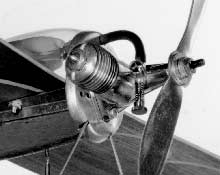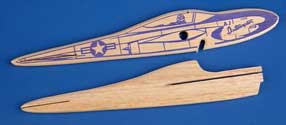
Brief History of Jim Walker's Firebaby

Jim Walker was the President and Founder of American Junior Aircraft Company of Portland, Oregon, which was established in 1929. He was known as an innovator, a man of vision and one who was way ahead of the times. This will become apparent as we look at the concept and development of the A-J Firebaby. Jim's entire career was based on the fact that he pioneered the "Ready To Fly" (RTF) concept in model aviation. However, Jim knew that several important factors had to be utilized if he was going to succeed with this concept. First, the airplane had to be aerodynamically designed and engineered. Secondly, it had to be precision made so it would FLY successfully. Thirdly, it had to be quickly and easily assembled. Finally, it had to be priced so the average boy or girl could really afford to purchase it. Those are the four principles upon which successfully built his business, the American Junior Aircraft Company. It was that way in 1929 and remained so until shortly after his death in 1958.

The first major event that brought the development of the Firebaby occurred when Ray Arden developed and perfected the Glow Plug in 1947. With this development model engine manufacturers soon brought out a whole new series of tiny engines to fit tiny model airplanes. Thus, a whole new category of model aviation was born in 1947 & 48. It came to be known as the 1/2A "craze" of miniature model engines with displacements from .010 to .074 cu. inch, with the .049 becoming the most popular.
Most model airplane kit manufacturers designing new smaller kits for the 1/2A demand in this frenzied era. Jim Walker was busy also. Ten years before had introduced the A-J Fireball and U-Control on the local market. It was introduced nationally with a full page ad in the September 1940 issue of Model Airplane News magazine. The Fireball was the worlds' first model engine powered U-Control plane, which started a a new era of kit production in the model industry.
It should be noted that Stanzel Bros of Texas introduced their beautiful Shark kits nationally before the Fireball. They called their system of control G-Line control which ended up being a temporary control system. Jim's system was called U-Control and is still in use today.
Ten years after the introduction of U-Control, Jim saw an opportunity for the development of a totally new A-J product, designed especially for these tiny new 1/2A engines with a simpler and better U-Control system, which would be perfect trainers for kids to learn to fly. It was the Spring of 1948.
The "Baby" is born...
 |
First Prototype Firebaby from 1947 |
Jim was anxious to get the model into production and on the market. He gathered his engineers and special creative crew together and told them what he wanted and what he envisioned. He even told them what the name of the new plane would be. It would be called the Jim Walker “Firebaby.”
First and foremost the airplane had to look good, like an American Junior airplane. It had to be aerodynamically engineered in other words. Secondly, it had to be precision made, no shortcuts, so it would fly successfully. To achieve this Jim brilliantly used some parts of the existing A-J models. For example, the wing and stabilizer of the beautiful American Junior Pursuit were to be used for the Firebaby.
 |
Firebaby fuselage was cut down from the "404" |
Another brilliant idea was the use of the ¼” thick balsa fuselage of the 404 Folding Wing Interceptor, cut down and modified for the Firebaby fuselage. That’s right, the wings and fuselage of existing successful A-J planes could now be used for the Jim Walker Firebaby. This allowed him go get the final product on the market right away.
The 404 fuselage would be modified for the Firebaby wing bracket and cut to allow for the baloon gas tank which would fit inside the bubble canopy. Note: The writer (Frank Macy) was present when Jim Walker was perfecting the balloon tank concept on a Fireball in 1947.
The stamped aluminum metal wing bracket was a two piece unit, top and bottom, to which the aluminum motor mountwas attached. The motor also held the landing gear in place by bolting the pieces together (see illustrations). It was truly precision made.

Jim knew that as a trainer it would have to take punishment. In effect, if you broke something, you could buy a replacement part at the hobby shop and be flying again the very same day. The whole airplane, in color and fuel proofed, sold for $2.50 without the engine or $7.50 with the engine. A damaged fuselage could be replaced for 45 cents. A new wing would cost 95 cents. Metal rudder, rubber tires, canopies and all other parts were were all available at the hobby shop. This attested the fact that everything was precision made, could be quickly and easily assembled and ready for flight.
Home | Jim Walker | Air Mail | Notices | Workshop | Short Takes | A-J Store